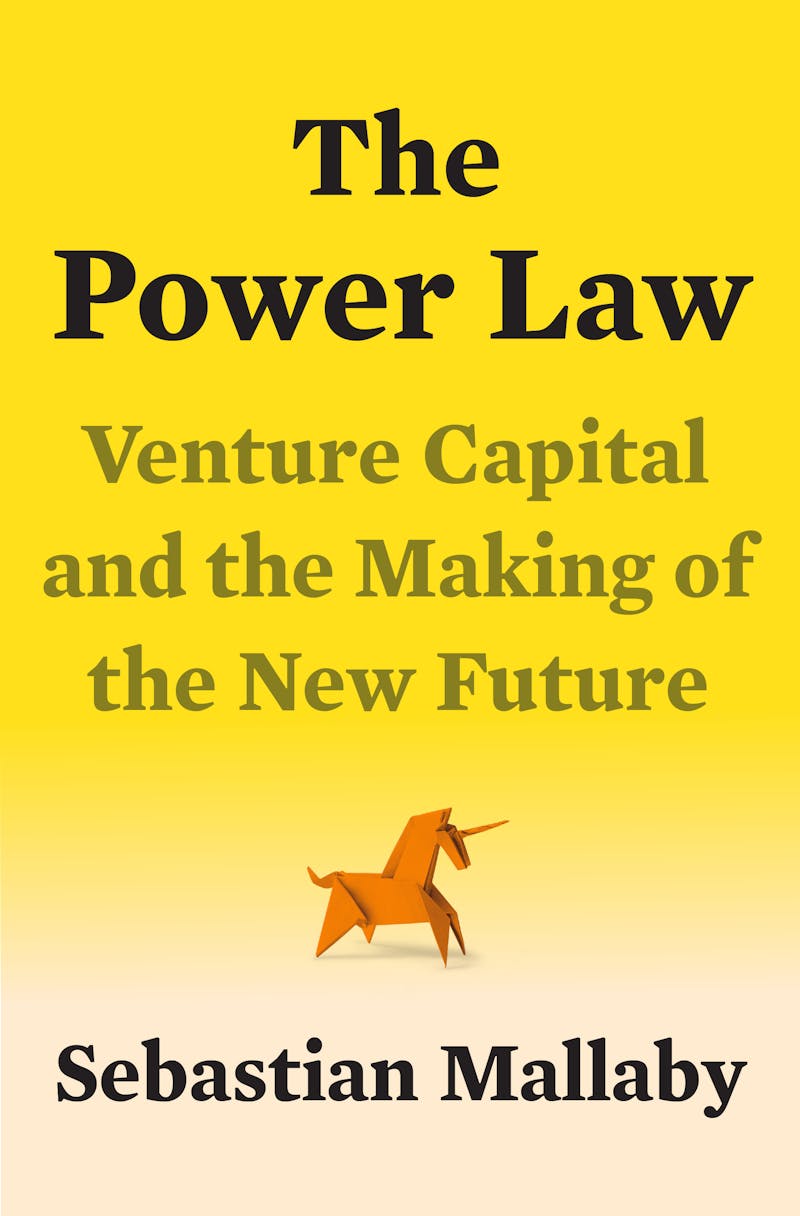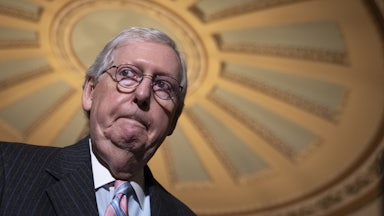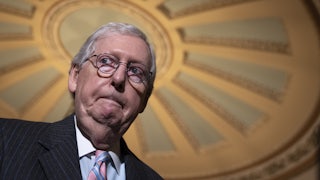Speculative bubbles have a way of leaving in their wake dozens of discredited economic writers, whose careers after the crash are forever haunted by the enthusiastic pronouncements they made while prices still rose. As John Kenneth Galbraith wrote in his history of the Wall Street crash, academics in the run-up to disaster praised the stockbrokers of their day for shaking off the “heavy armor of tradition” and adopting “vision for the future and boundless hope and optimism.” In June 1929, financier Bernard Baruch explained the rapid rise in stock prices by insisting it reflected a sober appraisal of economic fortunes: “The economic condition of the world seems on the verge of a great forward movement.” As the NYSE soared, one Princeton economist saw fit to comment that stocks were “not at present overvalued.” And in mid-October 1929, Irving Fisher of Yale made one of the most infamous predictions in the history of forecasting: “Stock prices have reached what looks like a permanently high plateau.”
Memories of 1929 come to mind when reading The Power Law: Venture Capital and the Making of the New Future, British journalist Sebastian Mallaby’s jaunty depiction of venture capital (VC for short) and its role in the U.S. economy. By helping to create “networks” that link inventors with ideas to investors with capital, VC funds have played an “unmistakable” part in developing new technologies, ranging from personal computers to routers to e-commerce to biotech. Besides all the tech, without this “strange tribe of financiers,” a “staggering amount of wealth might never have been created.”
Mallaby is the Paul A. Volcker Senior Fellow in International Economics at the Council on Foreign Relations, and his appraisal of VC thus carries a special imprimatur. The CFR is a century-old organization known for grooming Cold Warriors, an Upper East Side bastion of respectable elite opinion. The backing of one of its fellows (one who occupies a chair named for the Federal Reserve chairman responsible for hiking interest rates in the late 1970s, no less) might seem to underscore the eminent reasonableness of VC today. But reading The Power Law, a book replete with tales of dorky young men becoming insanely wealthy, buttoned-down investors muscling out founders who have grown too unpredictable, and financiers plying prospects with dinners or committing oddly large sums of money after meeting with pitchmen for absurdly short periods of time, one has a queasy sense that regardless of Mallaby’s fulsome praise, the fundamentals—on many levels—are far less than sound.

If you’re not a twentysomething college student or recent grad who is into trading tips about crypto and Robinhood, you may be forgiven for wondering what precisely defines venture capital. You may also wonder why it matters, if you’re not in the circle of people aspiring to fantastic wealth.
Venture capital refers to investment funds that invest in companies in their early stages, often giving fledgling entrepreneurs capital in return for shares of stock in the new business. Frequently, they seek some form of control over the company in addition to their equity—such as the power to appoint a CEO with expertise in running a company (as opposed to the inventor who has developed a new technology but has no actual experience managing a business). They cash in when the successful company finally has an IPO, or initial public offering, selling its stock to the broad public.
We are in an important moment to think about venture capital, because the past year has seen a flood of new money pour into VC funds, with the number of deals funded at all-time highs. Record numbers of private companies have stock valued at over a billion dollars on paper—known as “unicorns,” a term coined in 2013 by financier Aileen Lee—even though they have yet to test this by going public. Today, there are more than 1,000 such “unicorns” around the world, compared to fewer than 200 in 2016. Venture capital equaled 11 percent of all nonresidential fixed investment in 2021, significantly more than the 7 percent it equaled in 2000, the height of the dot-com frenzy, let alone the average of under 2 percent per year between 1980 and 2007 (figures that do not come from Mallaby but from the economics writer Doug Henwood). In other words, it’s a critical time for a serious exploration of the world VC is building, what its investments are, and what its economic but also political impact has been, and is likely to be.
The Power Law is not that exploration. In part, this is because Mallaby spends much of his time repeating much of what venture capitalists say about themselves, with little distance or critique. Take the title of the book, which comes from the idea that the “power law” is what differentiates venture capital from other approaches to investing. The basic idea is that, while most startup companies fail, those that succeed grow at an exponential rate that more than makes up for the losses. If nine out of 10 new firms in which a VC fund invests go bankrupt, but the tenth gives investors a return 100 times the initial investment, the fund will still be wildly successful. Rather than looking to the average—the “bell curve” distribution of results, in which most cluster near the middle with marginal cases on either side—the VC model privileges the outlier phenomena (the “long tail” of the distribution), insisting that these are the cases that matter the most. So a venture fund seeks out those companies that break all the rules and launch into new territory—for only in this way will it recoup its losses and succeed. Radical transformation, not the ordinary ebb and flow of price competition, is what matters; venture seeks out companies that are able to attain and hold a monopoly position for a period of time because they have developed something that never existed before. As Mallaby writes, “Venture capitalists look for radical departures from the past. Tail events are all they care about.”
Mallaby treats the “power law” like something on the order of the law of gravity. Its logic is simple. Success begets more success: “Once Jeff Bezos achieves great riches, his opportunities for further enrichment multiply; the more a scientific paper is cited, the better known it is and the more likely it is to attract further citations.” In his invocation of the “power law” in venture capital, Mallaby is essentially echoing the writing of PayPal co-founder and Trump backer Peter Thiel, whom he cites in the notes and even quotes in the text but without quite making clear the extent to which the formulation is really Thiel’s. Thiel and his co-author, Blake Masters, wrote in their 2014 book, Zero to One, that the “best investment” in a venture fund must be capable of outperforming the rest of the fund combined. “We don’t live in a normal world; we live under a power law,” they wrote. (With Thiel’s financial backing, Masters is now making a bid for the U.S. Senate in Arizona on the platform that Trump won the 2020 election—talk about the long tail.) But despite Thiel’s politics and personal interest in the industry, Mallaby takes his depiction of VC as a revolutionary, transformative, and overwhelmingly positive force largely at face value.
With his emphasis on the funders instead of the founders, Mallaby revises some of the oft-told legends about the early days of VC in Northern California. The defection of eight engineers from Shockley Semiconductor Laboratory en masse to start their own company in 1957, for example, is often presented as the moment when entrepreneurial scientists declared they were no longer willing to be employee-drones in the lab of a dictatorial boss, and thus as the origin of Silicon Valley. Frequently, this story is told from the perspective of the scientists; in such accounts, the founders are the heroes, the visionary inventors who had the courage to share their breakthroughs with the world. But Mallaby points out that they needed money to make the break, and in his view the venture capitalists who financed their “liberation” should really be praised instead.
Historians such as Fred Turner and Margaret O’Mara have emphasized the centrality of the hippie vibe of Northern California to the emergence of the tech industry: pot smoking at Atari, garage tinkerers building the early PCs, Steve Jobs as a long-haired fruitarian who disliked shoes. Mallaby sees it differently. In his view, the unabashed love of lucre was the key to the rise of Silicon Valley. As he argues, “the Valley’s distinguishing genius is that the patina of the counterculture combines with a frank lust for riches.” True, boring old Bell Labs scientists developed the transistor; the first popular web browser was created at the University of Illinois; military computer scientists invented the internet. But it was the promise of vast personal enrichment through stock options that turned these technological advances into shiny consumer products. In one memorable scene, Thomas Perkins, one of the venture capitalists who backed the biotech company Genentech, invites the founder, Robert Swanson, and a few nerdy researchers to his mansion. “Perkins showed off his tumbling gardens and tapestries and vintage cars, and the group ate dinner served by a uniformed butler. Standing outside the mansion, Swanson waved at it excitedly and exclaimed to his researchers, ‘This is what we’re all working for!’”

Using this framework, Mallaby runs through many of the greatest hits of venture capital—the rise of Sequoia and Kleiner Perkins (two of the venerable VC funds); the funding of Apple, Cisco, Google, Facebook; the rise of tech hubs in other parts of the world, especially China. Throughout, there are lots of stock characters: the finicky, brilliant founders; the daredevil investors, many of whom Mallaby depicts as temperamental outsiders driven by an atavistic compulsion to show up the Wall Street WASPs who resemble their junior high tormentors. He reports on “intriguing” meetings between visionaries who cannot be bothered with dull social norms like wearing pants to meetings, preferring to wear pajama bottoms and lounge in hot tubs. There are dreamy conversations on private planes, in which inventors in love with their own genius are moved to near-religious ecstasy by imagining a computer you write on directly with a stylus, rather than typing. We learn that Travis Kalanick, founder of Uber, apparently liked to call a would-be financier “homie,” as in “Hey, homie, I really wanna do this deal with you, but I have to go with this other firm, for the benefit of the company.”
Most of this reporting, though, serves to reinforce the oft-repeated clichés of the industry. Mallaby writes, “Most financiers value companies by projecting their cash flows. Venture capitalists frequently back startups before they have cash flows to analyze.” He cheerily describes the efforts of the financiers to schmooze and seduce the tech guys, disdaining hard numbers about returns as they compete against one another to be cut in: “Venture capitalists meet people, charm people, and seldom bother with spreadsheets.” Or as he puts it elsewhere with a presumably straight face, “to persuade investors to bet on the technologies of tomorrow, you must first unshackle them from the financial metrics of yesterday.”
But yesterday’s metrics have a way of making themselves felt in time, and what really comes across in The Power Law is just how susceptible the culture of VC is to panicked speculation. Between inventors who dangle the promise of wealth for an untested new technology; the mantra of revolutionary change; the quasi-ideological rejection of experience, expertise, and bookkeeping; and the constant warnings that the real danger is being too timid and cautious, that VCs have to go all in to make any real money—what could go wrong?
Mallaby comes closest to a warning in his concluding chapter, which deals with the fraud of Elizabeth Holmes, the collapse of WeWork, and the tribulations of Uber. In each case, eager investors handed over lots of money to people who played the role of brilliant entrepreneur but did not have a technology or a business plan that could turn a profit. The Stanford dropout Holmes was able to bluff her way into hundreds of millions of dollars for Theranos, her company selling a technology that was simply fraudulent (blood analysis done at home that promised to diagnose numerous problems from a few drops of blood): It did not work, had no prospect of working, and was nothing but a fantasy. WeWork was not engaged in criminal fraud, but it, too, was a story of empty promises: A founder, Adam Neumann, presented himself as a charismatic guru who claimed to have discovered a radical new way of organizing working space that made it a “platform” that would gain from “network effects”—certainly not just a landlord beholden to bricks and mortar and local real estate markets. Meanwhile, Uber founder Kalanick was able to whip VCs into a froth while building a global company premised on unrealistically low prices, low wages for its drivers, and a general strategy of undercutting public transit that has only turned a profit for two quarters (as of this writing).
Of course, Mallaby is aware of the dangers of “unicorn poker,” but he largely brushes them aside. Like many in the VC world, he depicts the suckers as outsiders and late-stage investors—people who are riding the wave of cheap money, not those with experience in the field. That increasingly jumpy VCs played a key role in ousting the boorish Kalanick is only further evidence (for Mallaby) of the utility of VC. But it is worth asking whether the line between the smart money and the dumb is so clear-cut. Today, the old formula—eager founder pitches reticent investor—has been reversed, as investors cold-call startups they deem promising to offer funding. The New York Times’ Erin Griffith’s reporting on Holmes’s fraud trial has highlighted the many prominent longtime Valley executives (such as Larry Ellison, a co-founder of Oracle) and VC figures who showered Theranos with cash, terrified of failing to spot a unicorn. Even Holmes’s plaintive defense at her trial shows how adept she was at working the industry’s nostrums: “They weren’t interested in today or tomorrow or next month,” she said of her investors. “They were interested in what kind of change we could make.” Even after the verdict, one of Holmes’s backers said in a statement that he was afraid that it might tamp down new deals: “A willingness to bet on these entrepreneurs and their visions has made Silicon Valley the innovation engine of the world.” As Mallaby puts it, “Try and fail, don’t fail to try.”
You wouldn’t know it from The Power Law, but there are real indications that VC is in for a bumpy ride ahead. Record amounts of money have been pouring into startups ($330 billion in 2021, more than double the 2020 figure), while investors insist that the pandemic has so revolutionized society that digital whiteboards and e-payments companies and online editing startups and firms that create marketplaces for NFTs are all suddenly valued at more than $10 billion. But at the same time, venture capitalists increasingly have been funding later-stage firms, pumping up their valuations instead of focusing on the new companies that are supposed to be their raison d’etre—perhaps a sign that there’s skepticism that the startups will pan out.
Meanwhile, the market for “secondaries” (when the first VC investors sell their stakes) has been growing, as early investors and founders, frustrated by how long it is taking their firms to mount an IPO—and perhaps anxious about what will happen once that day arrives—sell their shares to investors looking to get out of a volatile NYSE. Sequoia, one of the grand old venture capitalist firms, has recently combined all its funds together (including those that trade already-public companies) so that it will no longer have a fund dedicated only to startups. And VC investments in cryptocurrencies are growing rapidly ($27 billion by the end of 2021, according to The New York Times)—many of these made by venture capital wings of crypto companies, which see themselves as unconcerned with anything as mundane as “returns.” How long will this long view endure if the Fed does raise interest rates, or if other political and economic crises make this kind of investment seem a little less fun?
In fact, it is hard not to wonder whether the glory days of VC are already in the past. Thiel and Elon Musk and the rest can project that there are innumerable new frontiers to conquer—space rides! Cures for cancer! All just waiting to be unlocked by dollops of equity financing! But the companies that are winning funds today are a far cry from the foundational technology—the transistors, semiconductors, routers, personal computers, web browsers, search engines—that venture capitalists once backed. One has to wonder: Might not the early VCs have entered on the ground floor of a unique wave of technological innovation, itself based upon post–World War II investments in education and basic science—which has run its course, so that today’s investors are left to throw their cash at the best apps for editing grammar and hailing rides?
Our society actually does face a real crisis of investment, even innovation—but it is not about who can make the best new app, the cleverest gadget, the most revolutionary e-wallet. The real challenges are familiar and seemingly intractable: how to build good schools for everyone in our cities; how to invest in bridges and roads and basic infrastructure; how to make higher education available to all; how to invest in basic science; how to provide health care. All of these are serious problems of “the future,” but they are about politics and public finance rather than entrepreneurship (let alone the “flow of molten money” that Mallaby imagines streaming through a Shanghai neighborhood on the banks of the Huangpu River). The defenders of VC might plead that green tech is exactly the kind of revolutionary change it’s made for—but in reality, climate-related technologies only accounted for about $30 billion (5 percent) of all VC deals around the world in 2021, a far cry from the kind of extensive investment that is needed to make possible an economy less dependent on carbon and capable of slowing climate change. Analogous to building the interstate highway system or electrifying the countryside, a transformation of this scale will have to be made with a long view of human needs, rather than the churn of stock prices.
Mallaby pays little attention to the larger political and economic context for VC’s rise (although he does note in passing the late-1970s cuts to capital gains taxes that helped stimulate its emergence). But it cannot be separated from the recent revitalization of privately held wealth. Just as the late nineteenth century saw the rise of the publicly traded corporation, the opposite seems to be happening now—privately held fortunes are becoming more prominent in our politics, as Henwood has written in his work on the ruling class and the decline of WASP elites. (See his 2021 Jacobin article, “TAKE ME TO YOUR LEADER: THE ROT OF THE AMERICAN RULING CLASS.”) These kinds of firms have played a key role in promulgating the antisocial libertarianism that often reflects the views of owners who have to answer to no one but themselves. Because VC is predicated on the idea that starting a company is one of the great adventures of life, in creating buzz and excitement about being an entrepreneur, it helps to feed the idea that the only way to have a stake in society is through the romance and thrill of possession.
In the mid-twentieth century, the Austrian émigré economist Joseph Schumpeter bemoaned the disappearance of the trailblazing entrepreneur into the bureaucracy of corporate R&D, and warned that this would mark the end of capitalism. As he wrote, “Success in industry and commerce requires a lot of stamina, yet industrial and commercial activity is essentially unheroic in the knight’s sense—no flourishing of swords about it, not much physical prowess, no chance to gallop the armored horse into the enemy, preferably a heretic or heathen—and the ideology that glorifies the idea of fighting for fighting’s sake and of victory for victory’s sake understandably withers in the office among all the columns of figures.” Implicit in Schumpeter’s concern was the question: Once the family fortunes vanished into bland corporate boards, who would care to defend wealth and property any longer? But the past 40 years have seen a revival of the idea of self-branding and entrepreneurship at all levels of the economic order. And by infusing new passion into the idea of ownership, venture capital has reversed the trends Schumpeter feared—as a cultural trope as much as a reality. It has helped to make possible and to regenerate the privately held firm as a major form of wealth, and with it a politics of intense free-market faith and absolute certainty that the winners deserve to be at the top.
Over the past few months, the world into which The Power Law was published has been shaken deeply. All of a sudden, it seems, the old order of national boundaries and rivalries has reasserted itself with dangerous force, which makes Mallaby’s upbeat vision of endless innovation and scads of money yet to be made feel oddly out of place. One may not be reassured about the state of world events on learning that one of Peter Thiel’s latest unicorns is a defense startup named Anduril that (as Mallaby helpfully reports) “embodies the audacity of the Valley.” The last pages of The Power Law, which allude to looming conflicts with China, try to join VC to some idea of “national power”—an issue absent in the rest of the book, which unfolds in the free-market global utopia of post–Cold War politics. It’s a sign of the times that an erudite journalist stationed at the austere CFR could openly swoon before the spectacle of so much money, with only the slightest overlay of concern for the interests of society at large. In the end, his book is really a lesson not in the power law, but in the law of power.










